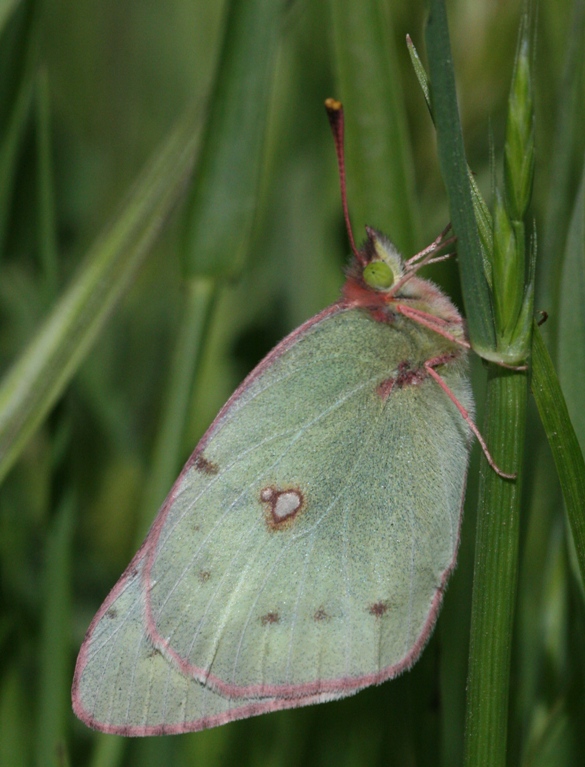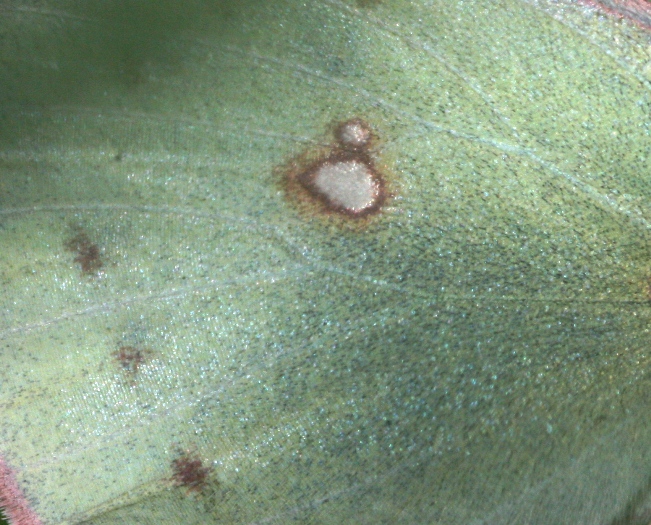


Although this was identified as a sulfur (see below), it was quite green in color. It was also extremely cooperative in terms of letting me take close up photos.
Some comments per Dr. Carol Boggs, butterfly aficionado:
A female Colias eurytheme, the alfalfa butterfly. Larval host plants are alfalfa, vetch and various other legumes - but
not the purple-flowered legume that's blooming in places on the Stanford dish. It can't diapause, so is a lowland species. You
can find it in huge numbers in Central Valley alfalfa fields in summer/fall; it hangs out probably on native hosts, developing
slowly, over the winter. It seems to be much more numerous in the Bay Area itself in spring in recent years. Females come in
two morphs - yellow/orange like the males, or "alba" (a dominant autosomal sex-limited gene) which results in a white
phenotype, caused by re-routing lots of N-containing compounds away from the yellow pigmentation and into reproduction/faster
development and the like particularly at low temperatures.
The Colias is the study animal of Dr. Ward Watt at Stanford.





 Alfalfa butterfly
Alfalfa butterfly White peacock butterfly
White peacock butterfly Spanish moth
Spanish moth Silkworms
Silkworms Sphinx moths
Sphinx moths California oak moth
California oak moth Monarch butterflies
Monarch butterflies Insects
Insects Spiders
Spiders Animals
Animals


modified: March 21, 2014
created: March 21, 2014 (from whitepeacock.html)
Contact: siegelr@stanford.edu